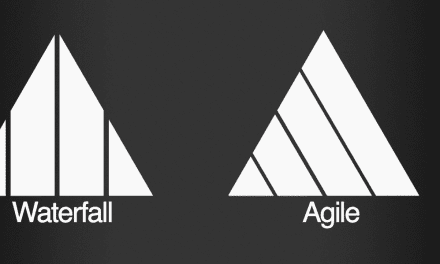Trust is the cornerstone of success for a technical program manager. Here, we will learn how to earn trust within an organization and how we, as TPMs, can build and sustain trust. As a TPM, your ability to uphold trust will define not only your success but also the success of your team and organization.
The Importance of Building Trust As A TPM
Trust is the lynchpin of a TPM’s rise to power. It is impossible to have an impact without it. TPMs, as opposed to most roles, tend to have unlimited responsibility but limited authority, which makes trust all the more important.
Establishing & Sustaining Trust As A TPM
Building Trust is not a one-time singular effort, it is a continuous process. It requires consistency over a long period of time. Having said that, losing trust can happen quickly and abruptly. Below are some ways you can build and sustain trust. This applies to multiple leadership roles, but is critical for a TPM.
Communicate Effectively
No Surprises: Ensure you are always keeping your stakeholders abreast with everything that is happening in your program. I always recommend giving them a heads-up either on Slack or during your 1-1 with them. It’s never a good idea to ambush them with a large risk at a Program review meeting in front of everyone.
Alert issues immediately: It’s always hard to figure out how soon to tell your stakeholders of a recently discovered risk. Timing is key. So the first thing to do is to deep dive into the risk area, speak to the relevant parties and come up with all possible mitigation strategies. Have the teams quickly roughly size the mitigation strategies. Ideally, this does not take more than 48 hrs. Once you have this it is time you let your stakeholders know.
Understand your audience and communicate based on their requirements: having worked with hundreds of stakeholders across many organizations. I have come to understand that every stakeholder likes to be presented with program updates in a variety of different mediums. Some like Slack updates, some like a one pager while others like PowerPoint presentations.
Whatever your medium might be – always be specific and back up your points with data.
Writing Effective Documents
Documents Need to be Self-Contained: Any document you author as a TPM needs to be self-contained. It should describe the problem well and have all the data people need to make decisions. If the data sets are too large try to add condensed data into your report and the larger dataset in the appendix.
Edit Like Crazy: read and re-read your docs for accuracy and ask yourself if you have answered all possible questions your stakeholders would have. Once done get it reviewed by multiple
Spur Discussion: Good docs should spawn fruitful discussions, rather than ask the questions that need to be resolved to understand what the docs are saying in the first place. Great docs propose the path forward and receive unanimous agreement from all parties at the meeting.
Do Your Homework
Sharpen your understanding of the problem space and resist the urge to simply accept requests as they come to you. Look at what the root causes are and make sure you are solving the correct problems.
When managing large cross-functional programs, it’s common for other teams or individuals to attempt to expand the scope by attaching their projects to your program.
This often occurs because the program you own may have executive sponsorship and higher organizational priority, making it easier for those projects to gain visibility and resources. By merging their initiatives with yours, they aim to secure prioritization both within their team and from external stakeholders. It’s important to manage these scope expansions carefully to maintain focus on the core objectives of your program.
Trust and Verify
Always verify the information you receive. Never take opinions at face value. Re-confirm your information with other sources.
Lead From The Front
Drive the Bus: Be proactive and gather the information you need and make sure you drive every decision in the correct direction.
Streamline Processes: Continuously seek ways to streamline workflow.
Know Meeting Outcomes: As a TPM pre-align with key stakeholders to ensure meetings are productive and outcomes are clear. As mentioned above never blindside your stakeholders. If you feel that someone may be unhappy with something that your report or meeting is going to call out, get in front of it.
Build Relationships
Good Work: exceed in your communication style and create a reputation of being trustworthy. Do this by having more 1-1s with your stakeholders and peers. Build a strong rapport. And slowly build trust.
Humble and Self-critical: Help people wherever. TPMs also should focus on fixing problems, not placing blame.
Always be self-critical and evaluate yourself. Hold yourself to high standards. Watch and learn from your peers.
Serve Others: A good TPM always pays it forward, stepping in and helping anyone in need.
Passively Listen: Listening to and learning from others.
Influence Through Others
As a TPM one great way of gaining trust is to identify the movers and shakers and get them on your side to leverage their support to champion your ideas. These “movers and shakers” are often not just leaders by title but are trusted voices within the team or organization, known for their expertise, credibility, or ability to rally others.
Conclusion: Trust as the Foundation of TPM Success
Building trust is not just a skill—it’s a mindset that defines the success of a Technical Program Manager. It requires consistent communication, proactive problem-solving, and genuine relationship-building. Trust enables TPMs to influence without authority, align diverse stakeholders, and drive programs forward in complex environments.
However, trust is fragile. While it takes time and effort to build, it can be lost in an instant. The practices outlined above—effective communication, thorough preparation, leading with empathy, and fostering collaboration—are your tools for cultivating trust that lasts.
Ready for your next career adventure?
Get personalized advice from Mario to confidently choose the roles, companies, and skills that shape your future!

















